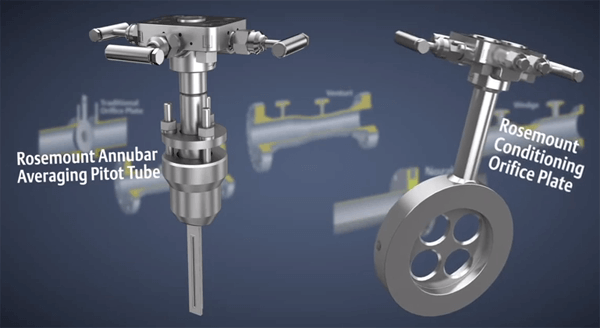One of the most proven ways to measure flow rate is through differential pressure measurement. By creating an obstruction in the flow of fluid, a difference in pressure is created upstream and downstream of the obstruction. In this 3:12 educational YouTube video, How Differential Pressure Flow Works, Emerson’s Rosemount Measurement team illustrates how differential pressure (DP) flow technology works and how an integrated design improves installation and ongoing maintenance.
The video opens describing the two key components in measuring flow rate using differential pressure—the primary element and the secondary element. The primary element, placed in the pipe, is what creates the obstruction in the line to produce the difference in pressure across it. The secondary element or transmitter takes the measurements from the primary element, converts the measurement into useful quantitative values, and transmits the value to the control system.
Primary elements come in many varieties including traditional orifice plates, cone, venture, nozzle, and wedge designs.
Two additional methods we highlighted in earlier blog posts include the Rosemount Annubar averaging pitot tube and the Rosemount conditioning orifice plate.
From an installation standpoint, integrating the primary and secondary elements removes the need for impulse piping and the maintenance associated with it. This piping is also a potential source for leaks which might pose safety and environmental issues depending on the fluid being measured. The video explains how the primary and secondary elements are integrated.
For advanced multivariable transmitters, compensated mass flow calculations can be performed through the measurement of static and differential pressure as well as process temperature.
More educational videos can be found on the Rosemount Measurement YouTube channel. You can also connect and interact with flow measurement experts in the Flow track of the Emerson Exchange 365 community.






